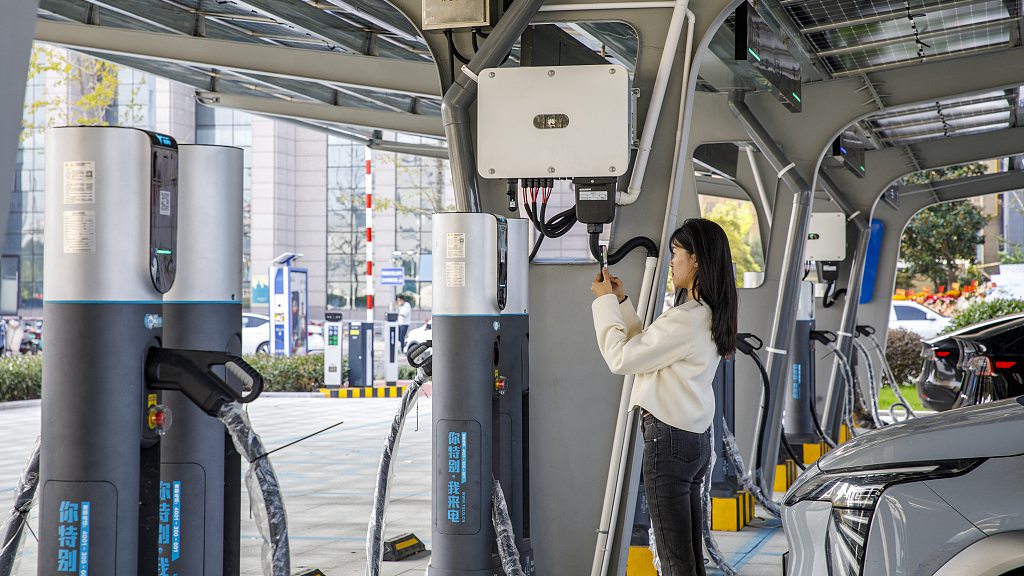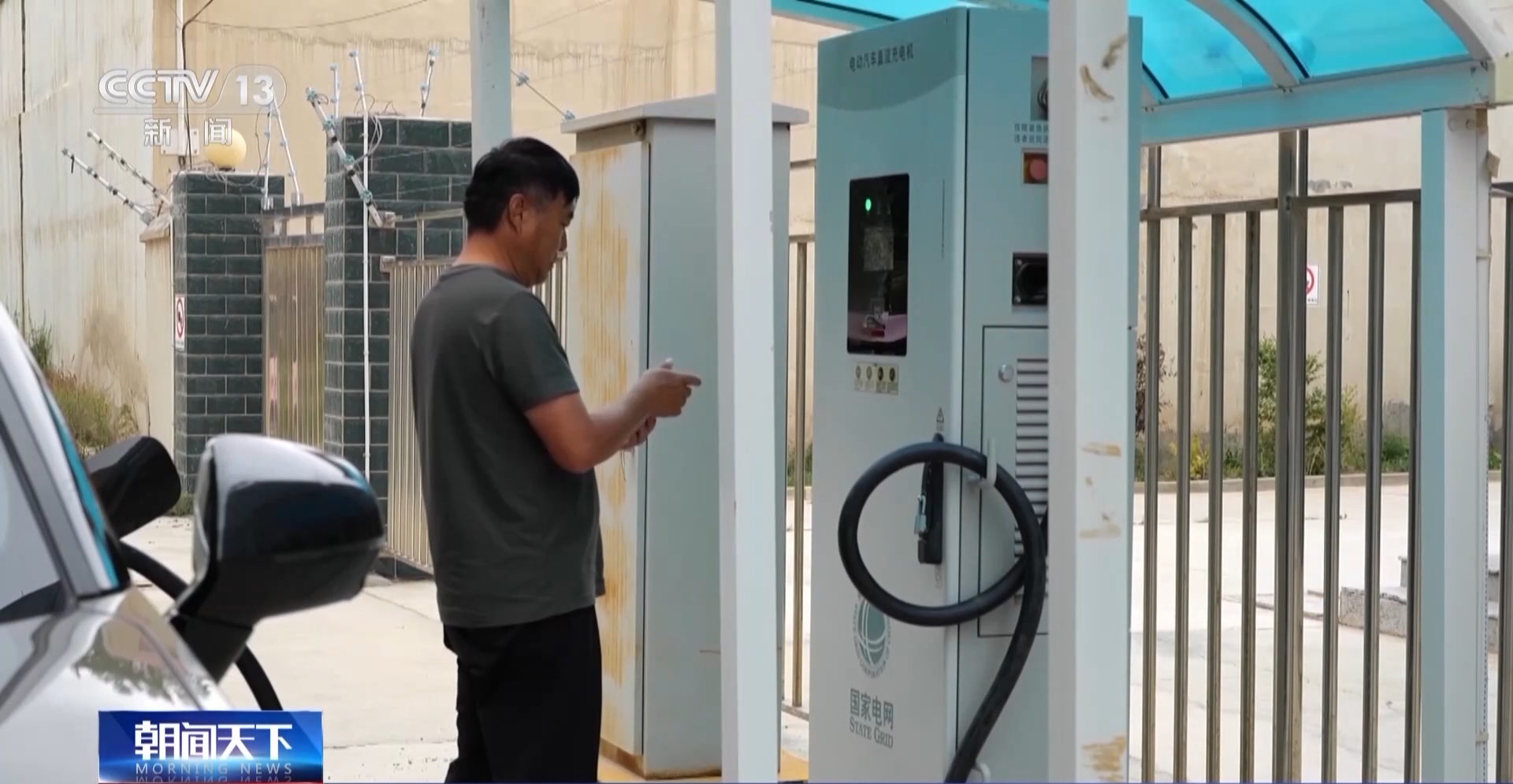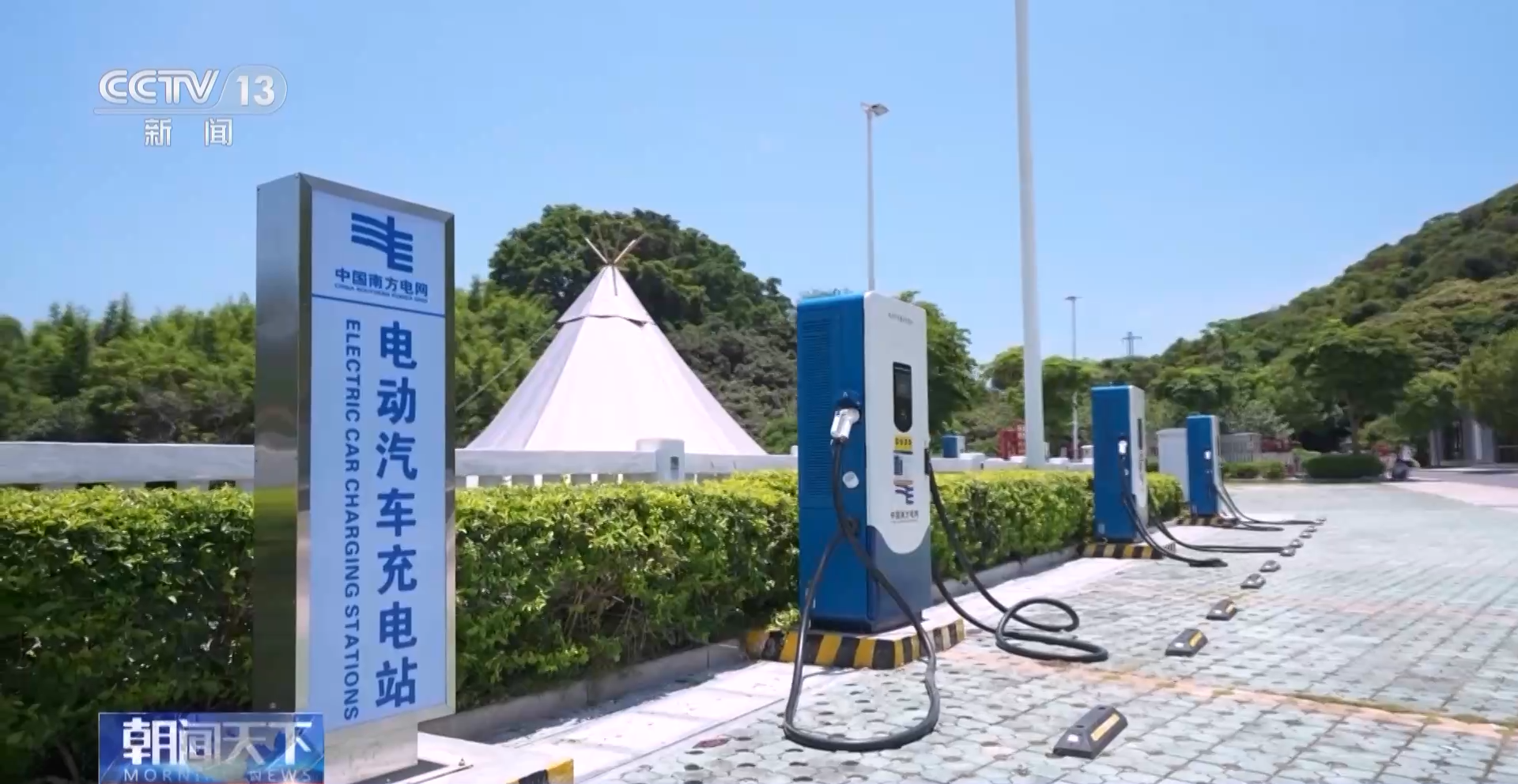A NEV charging station in Lianyungang City, east China's Jiangsu Province. /CFP China hit new highs in the production and sales of new energy vehicles (NEVs) in the past month, according to the China Association of Automobile Manufacturers (CAAM) in its October release. In September alone, the country's NEV production and sales totaled 879,000 and 904,000 units, respectively, up 16.1 percent and 27.7 percent over the last year. The NEV sales made up roughly 31.6 percent of the country's total auto sales in September as the latter was 2.858 million. In the past three quarters, the total output and sales of NEVs reached 6.313 million and 6.278 million, realizing a year-on-year increase of 33.7 percent and 37.5 percent respectively, said the CAAM. A total of 18.21 million NEVs had been registered in China by the end of September, with 5.19 million new registrations during the first nine months – up 40 percent from the same period last year and accounting for 28.6 percent of all new automobile registrations. Export of Chinese NEVs were also notable, according to the CAAM data. A total of 96,000 NEVs were exported in September, and the number was 825,000 in the first three quarters, achieving year-on-year growth of 92.8 percent and more than 110 percent, respectively. Charging facilities expanded With the rapid growth of the industry and the advancement of related technologies, NEVs have become a preferred option for more people, and the country has pushed forward the construction of charging infrastructure to support the industry development and ensure good travel experience. According to data from the State Grid, the NEV charging capacity reached 29.2 million kilowatt hours at the high-speed service areas across China during the first six days of the Golden Week, setting a record high. Facing the travel rush, high-speed service areas adopted various measures to optimize the charging process for NEV owners. In east China's Jiangsu Province, a charging station that can provide charging service to 120 NEVs at the same time was installed on the airport expressway in the capital city of Nanjing. Since this year, Jiangsu has built 281 charging piles at major travel hubs such as highway service areas and airports, almost doubling the charging capacity compared to same period last year. A mobile emergency charging cabin with six direct-current charging piles was equipped at a service area in Jinan, east China's Shandong Province. With the maximum output power of each pile reaching 180 kilowatts, the charging cabin can meet the demand of 216 NEVs a day. "I am from Beijing. I charged three times during the journey to Suzhou spanning 1,200 kilometers, and spent a total of 260 yuan (about $36). It's very convenient," Wang Xuewei, a tourist told China Media Group (CMG). Wang Guoqing, a visitor from central China's Wuhan City, told CMG at a service area in east China's Jiangxi Province that the charging process is convenient as one just needs to scan the QR code for charging, and the queuing time is acceptable. A resident charges his NEV in Kizilsu Kirgiz Autonomous Prefecture. /CMG China's NEV charging systems have also expanded to areas where were hard to reach. In the Kizilsu Kirgiz Autonomous Prefecture, located in the westernmost part of Xinjiang Uygur Autonomous Region, 96 new charging piles were built in the first half of this year, and a total of 296 piles are planned for the whole year. The increasing charging piles not only meet the needs of tourists, but also drive the sales of local NEVs. In the first half of 2023 alone, the prefecture sold 196 NEVs, surpassing the sales of 2022. The charging station on Nan'ao Island. /CMG Nan'ao Island, the only island county in Guangdong Province, mainly deals with seafood farming and attracts a lot of rural tourism. With its seafood transportation shifting to NEVs, the demand for charging piles is growing. To address the problem, six charging piles were put into operation in the first half of the year as part of the 12 public charging stations on the island, which cover all the towns and villages. A high-quality charging infrastructure system China aims to establish a high-quality charging infrastructure system by 2023 with "extensive coverage, moderate scale, reasonable structure and perfect functions," said a guidance released by the State Council in June. Efforts will be made in constructing intercity charging network, interconnected charging networks in urban regions, and charging networks in rural and residential areas, among others. In the first three quarters, more than 2.43 million units of charging facilities were newly added, among which 664,000 were public charging piles and over 1.76 million were private ones, according to the China Electric Vehicle Charging Infrastructure Promotion Alliance. The alliance's data also showed that as of September 2023, there were 7.642 million units of charging facilities nationwide, a year-on-year increase of 70.3 percent.


China's NEV industry maintains robust growth, supporting facilities expand
Editor:谭婕倪
Source:CGTN
Updated:2023-10-17 09:14:42
Source:CGTN
Updated:2023-10-17 09:14:42
Special
Contact
Welcome to English Channel! Any suggestion, welcome.Tel:0731-82965627
lisl@rednet.cn
zhouqian@rednet.cn











